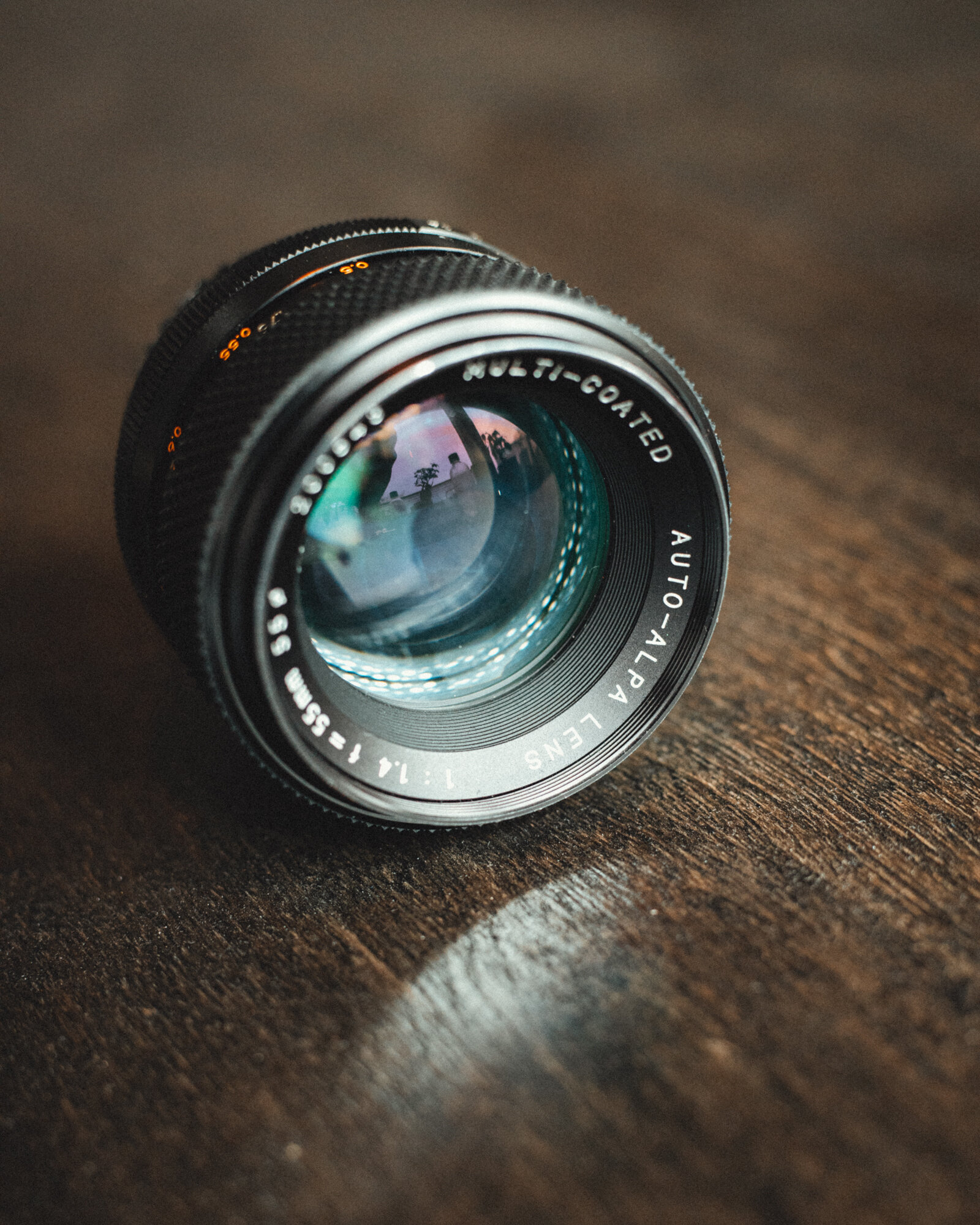Voigtländer Color-Ultron 55mm 1.4 AR vs. Auto-Alpa 55mm 1.4
Having recently stumbled upon those two similar lenses, I thought a little comparison might be interesting to see which one you should get.
Voigtländer Color-Ultron 55mm 1.4 AR
Brand: Voigtländer (though the brand belonged to Rollei back then, the design is by Mamiya)
Type: Prime Lens
Year of release: 1975
Focal Length: 55mm
Aperture: 1.4
Weight: 270g
Condition of my copy: Big dents on the filter ring and some visible scratches on the front element, which somehow don’t affect the image quality.
Build
The Voigländer Color-Ultron was designed by Rollei and manufactured in Japan. Due to being older than Star Wars, it doesn’t offer autofocus or the ability to control the aperture through the camera (and unsurprisingly doesn’t communicate EXIF data). The build quality is pretty dang good, solid metal, rubberized rings on focus and aperture and (apart from the big dents on the front) a pretty handsome design. The focus and aperture work smoothly and I don’t think I’ve ever experienced a more satisfying aperture click. The minimum focus distance is at 0.45 m or 1.5 ft. The mount sadly is a Rollei 35 QBM Mount (apparently, this mount has more than one name), which isn’t as universal as m42 for example, but offers the benefit to be adaptable to Canon EF without interfering with the mirror on full frame.
The adapter I use is made by Fotodiox. It was about 15€ and fits well and tight. Downsides are the little metal edge to push down the aperture pin (which it doesn’t do unless you carefully push the pin in yourself) and the sharp edges.
Apropos aperture pin. This lens sadly doesn’t feature the option to switch the aperture from manual to auto like some of my Minolta lenses (and the Alpa, more of this later) do. The pin, which keeps the iris from actually closing when not pushed in, appears a bit flimsy to me and I’m afraid that when it breaks I won’t be able to control the aperture anymore. Apart from this I’d trust this lens to survive a rougher going, which it apparently has; the dents indicate, that the lens has been dropped with a Voigtländer camera attached to it (which is heavy as f***) and yet aperture and focus are as smooth as a baby’s butt (not that I’d now, what do you think of me?)
Image Quality
Now this is a tough one. Old lenses obviously do have more faults (and dare I say character) than modern lenses. So does this. Still, so far it might be one of the sharpest retro lens I used on my DSLR, comparable to a Helios 44-2, though with less swirly bokeh. I wouldn’t say the Voigtländer’s bokeh is characterless, but it’s definitely far more reserved and less in your face. I actually quite like it, since it has a hint of old glass character and yet appears sharp and modern. Flaring is well under control as well, which isn’t that usual with old scratched lenses. Of course, wide open at f1.4 it’ll still have some buttery softness, but already at f2.8 the lens outperforms many younger rivals. The only drawback is the vignetting, which is already visible in the viewfinder. You should check this if you get the chance. For me however, vignetting isn’t a problem, since I usually add some vignetting in post anyway.
Auto-Alpa 55mm 1.4
Brand: Alpa (Though it‘s most likely produced by Chinon)
Type: Prime Lens
Year of release: No idea. This lens hasn’t yet left many marks online.
Focal Length: 55mm
Aperture: 1.4
Weight: 300g
Condition of my copy: Optically fine, no scratches on the glass and no dents. The aperture ring is broken, so the aperture is stuck on f1.4
Build
The Auto Alpa also features a full metal body and a rubberized grip on the focus ring, though not on the aperture ring. Originally this ring was clicked, but since the aperture broke the dial runs smooth. Contrary to the Voigtländer, it features a manual and an auto mode - which don’t work since the aperture broke.
The mount is m42. This has both advantages and drawbacks. On the plus side, it is adaptable to nearly every bayonet in the world, including EF and SR. The downside is, that the lens collides with the mirror on EF full frame when focused on 2 m or further away. This is enough for portraits - and with an aperture stuck on 1.4 you wouldn’t go for landscapes or architecture anyway.
Image Quality
First of all, stopping down sadly isn’t an option, so it’s a bit unfair. Still, even at f1.4 the Voigtländer is sharper. The Alpa produces a creamy, dreamy bokeh and lovely flaring, but when shooting objects further away than about a meter those might get lost in flares. Due to the lack in sharpness, acquiring focus manually isn’t as easy as on the Voigtländer.
On the upside, it has quite some character and a dreamy bokeh with a little swirl. Not as swirly as a Helios, but dreamier and sadly a bit softer.
Conclusion
In my humble opinion, the Voigtländer is the better lens. In part due to it being in a better shape, but also for the plus in sharpness. Having said this, I’ll still use the Alpa on my Minolta bodies. The m42 mount is one of the most universally adaptable mounts and such a fast dreamy lens is well suited film photography. Any way, you should try to test them both before buying. Check if the pin on the Voigtländer is still intact and wether the aperture on the Alpa works.
Sample pictures are shot with the Alpa on a Canon 6D MkII








